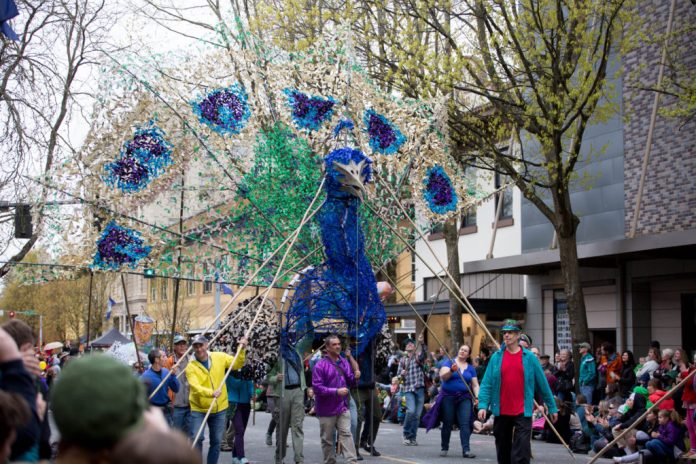
The iconic Procession of the Species can trace its roots back to the early 1990s in Olympia, the fruition of culture-focused programming created by Eli Sterling and his Earthbound Productions studio. The tenets supporting the Procession, and the three simple rules behind participation in it, stem from deep, spiritual roots.
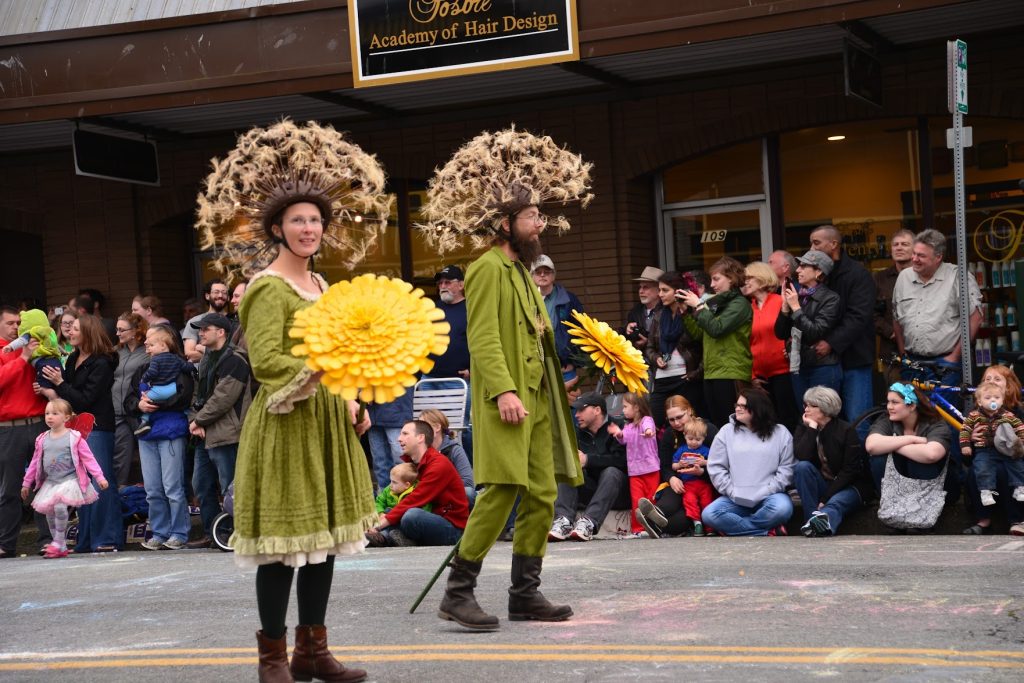
Philosophical Elements Behind Olympia’s Procession of the Species Have Deep Roots
While working on the Endangered Species Act Coalition in connection with his master’s degree thesis, Sterling started the Rachel Carson Environmental Forum at The Evergreen State College.With both an award-winning show called “Earthbound” and the Carson forum, Sterling designed his programs unconventionally, specifically for the purpose of bringing culture to the forefront of the discussion, feeling that people had lost their cultural exchange with the natural world and that by cultivating culture, participation would come with it.
Both programs focused on culture, music in particular, and presented keynote or guest speakers as intermission activities. Yet, questionsremained about what was stopping people from solving issues,about cultural values and what is important.
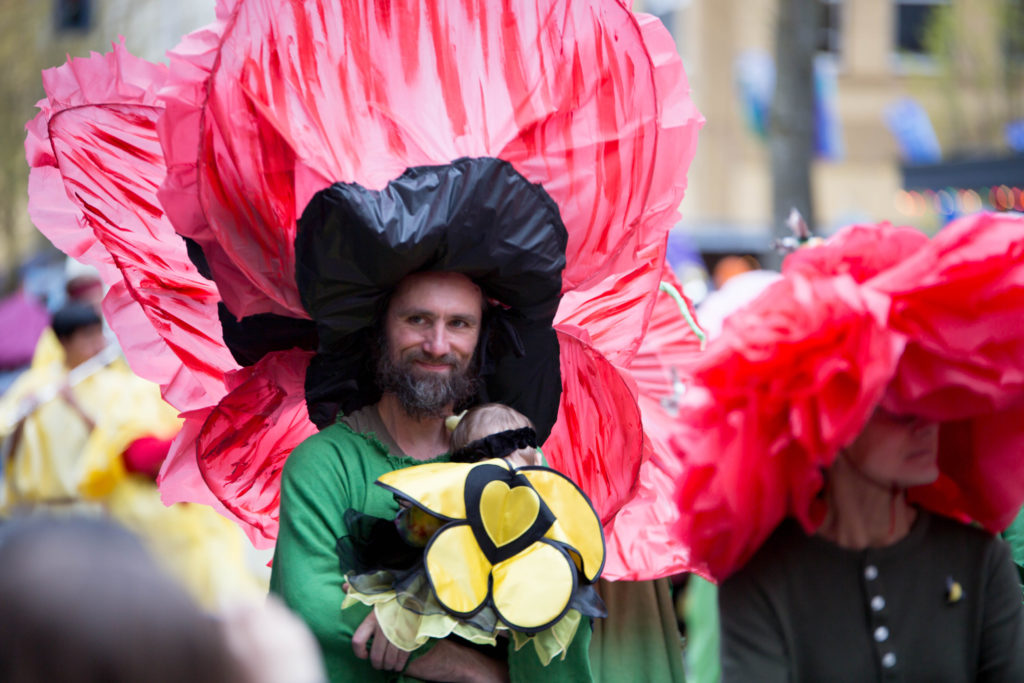
Realizing media was not the solution toward environmental action and advancing cultural relationships, Sterling knew there had to be another way. Partly inspired by solstice parades, he saw a promising cultural relationship concept, a procession. In 1995, in tandem with the 25th anniversary of Earth Day, Earthbound Productions invited the Olympia community to do a Procession of the Species as a way of advancing the Endangered Species Act, which was under political threat at the time.
Another pivotal moment in the development of the Processionfor Sterlinghappened one day when he saw the contrast of a poisonous water sign amid the surrounding natural beauty of Budd Inlet. He realized the sheer beauty of the world wasn’t enough of a motivator for change, and a thought emerged.
“In effect, our specific focus is to generate a cultural exchange rather than an entertainment event,” Sterling says.“We’re far more willing to protect that which we create versus that which we consume. As such, we need to constantly introduce ourselves into creative relationships on a cultural level because we’ll be far more willing to engage, appreciate and share those outcomes, as opposed to outcomes of consumption which are all too readily channeled into acts of discardment.”
Sterling also emphasizes that it is important to note that lots of people get credit for wanting the Procession to happen, in 1995 and in the years since. “It shows up in the work each year, where the effort enlists a base of 100 production crew volunteers,” he shares.
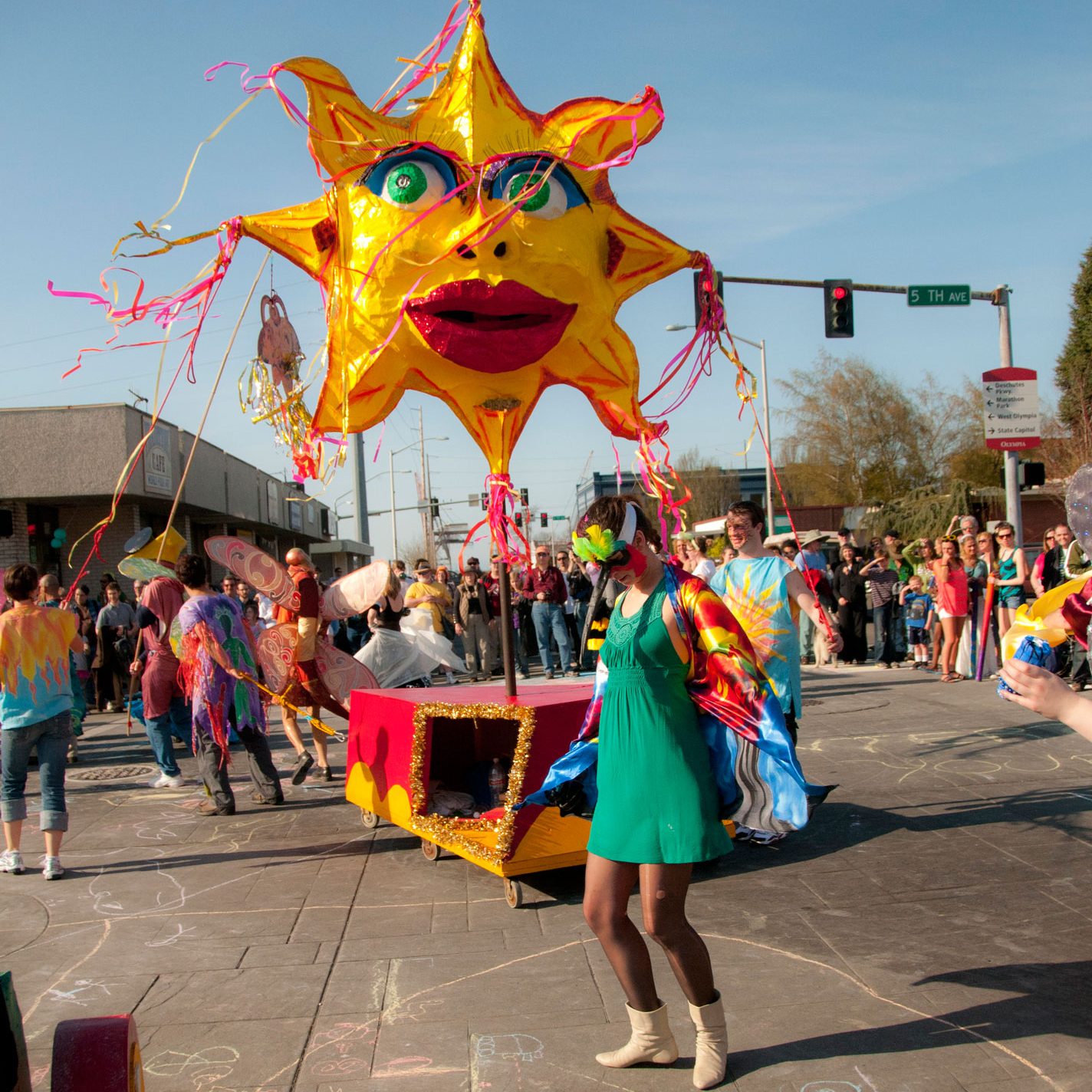
Designed to Keep the Procession of the Species Elastic in Olympia
Cultural relationship focus has always been important. Three rules emerged: no pets, no motorized vehicles and no words. Without words, there is no comparison or competition among ideologies or artforms.
“Our hope is to create an engagement,” says Sterling, “both in the art studio and on Procession day, where people are allowed to step outside of comparative reality, give witness to their creative spirit, and much like when we are in nature, enjoy a time of acceptance.”
The founding tenets aimed at the long-term – cultural exchange through art, awaken non-aesthetic values in people, give space for diversity in expression, use sustainable practices, and provide music and dance opportunities, thus giving the elasticity of people following their artistic expressions.
Politicsconcerning the environment were tenuous in 1995. Some people urged the Procession of the Species to include words to oppose legislation issues while other movements were purposely staying quiet.“The Procession was a public commitment to ‘standing up’ in the face of withering criticism across the spectrum of the environmental movement at that time,” Sterling says.“Nearly every organization was taking cover as we had lost congressional leverage for environmental policy.The Endangered Species Act was under attack and even EarthFirst! and the Rainforest Action Network, were on the ropes with corporate media finding success with labeling them terrorist organizations.But we didn’t bend. We would not apologize for wanting to engage the beauty of this Earth.”
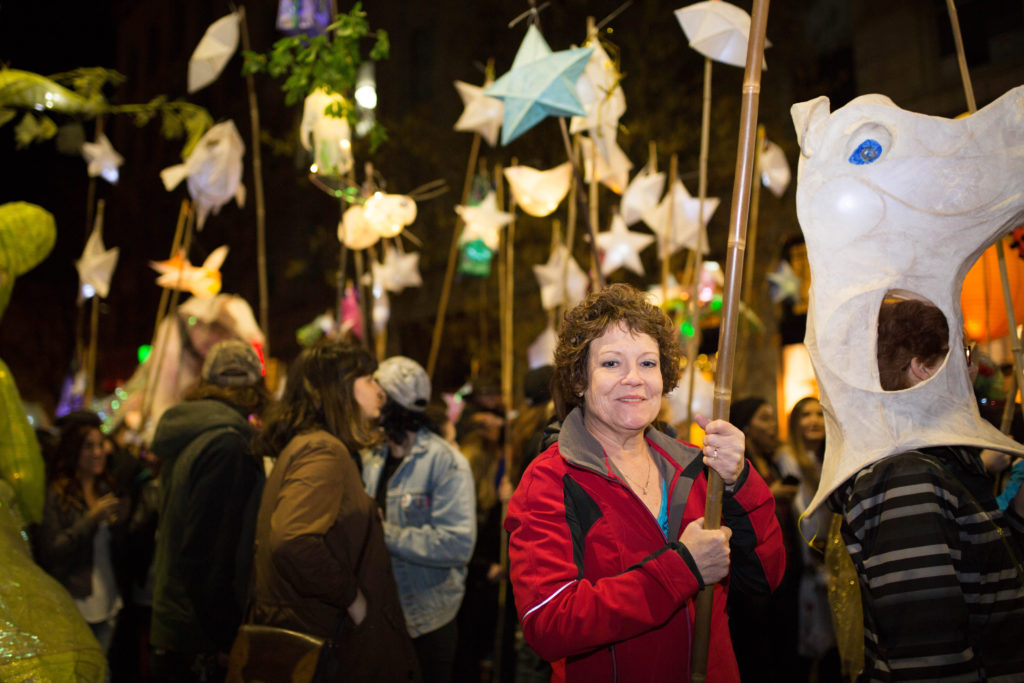
Luminary and Procession of the Species Part of Olympia Culture for 20 Years
While national celebrations of Earth Day were low-key in 1995, in Olympia it was the first day of the Procession of the Species. And two years later on the 25th anniversary of the Endangered Species Act, Earthbound was the only group in the United States to even have a celebration.
A 20-year plan commenced with four, 5-year time blocks, each thematic: the year of the mask, year of the dance, year of the voice and the year of the heart. Each spring, workshops invitedthe public to sign up for paper mâché, painting, batik work and lantern making for the Luminary and Procession of the Species.Community bands have also been an essential component in each of the earth, air, water and fire element sections.
Both the Procession of the Species and the Rachel Carson Environmental Forum continue today, eachhaving cultural as a centerpiece.
“This procession is recognizing that there is something beyond us,that which is infinity,” says Sterling,“which means that somewhere along the line we have to recognize the miracle that we’re part of and we should be a kinder people.”
It’s about culture. It’s about relationships.Visit the Procession of the Species website to get involved in celebrating the preservation of our Earth.
Luminary Procession
April 26, 8:30 p.m.
Procession of the Species
April 27, 4:30 p.m.



















































